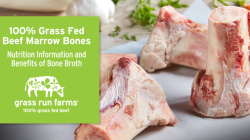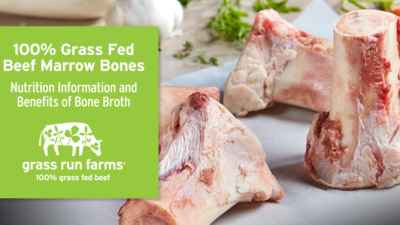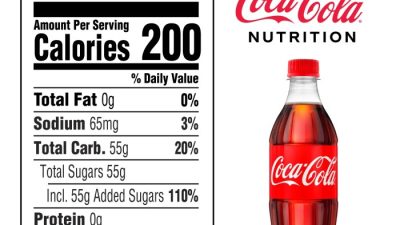Domino’s Pizza Nutritional Information Overview

Domino’s nutrition facts – Domino’s provides nutritional information for its pizzas, allowing customers to make informed choices about their meals. This information typically includes calories, fat, protein, carbohydrates, and other relevant nutritional components, varying based on pizza size, crust type, and toppings. Understanding this data is crucial for managing dietary intake and making healthy choices.
Nutritional Values Across Different Crust Types
Domino’s offers several crust options, each impacting the overall nutritional profile of the pizza. Hand-tossed crusts generally contain more calories and fat than thin crust options due to their thicker nature and preparation method. For example, a large hand-tossed pepperoni pizza will typically have significantly more calories than a comparable thin crust pizza. The differences are primarily in the carbohydrate and fat content, with hand-tossed crusts contributing more carbohydrates from the added dough.
Specialty crusts, like stuffed crust, will further increase the calorie and fat content.
Calorie Ranges for Various Pizza Sizes and Toppings, Domino’s nutrition facts
The calorie count of a Domino’s pizza is significantly influenced by both its size and the toppings chosen. A small cheese pizza will naturally have fewer calories than a large one. Adding toppings like pepperoni, sausage, or extra cheese will increase the calorie, fat, and protein content. Vegetable toppings generally add fewer calories compared to meat toppings, but their impact still needs to be considered when calculating total nutritional intake.
For example, a large pepperoni pizza might contain over 2000 calories, while a small veggie pizza could fall closer to 800 calories. These values are estimates and can vary slightly based on specific ingredient weights and preparation methods.
Nutritional Information for Select Domino’s Pizzas
| Pizza | Calories (per slice, approximate) | Fat (grams, per slice, approximate) | Protein (grams, per slice, approximate) | Carbohydrates (grams, per slice, approximate) |
|---|---|---|---|---|
| Large Cheese (Thin Crust) | 200 | 8 | 7 | 25 |
| Large Pepperoni (Hand-Tossed) | 280 | 14 | 10 | 30 |
| Medium Veggie (Thin Crust) | 180 | 6 | 6 | 22 |
| Small Cheese (Hand-Tossed) | 150 | 6 | 5 | 18 |
Note
Domino’s nutrition facts often highlight the calorie and fat content of their pizzas, a key consideration for health-conscious consumers. For a comparative perspective on baked goods, you might find it interesting to check out the costco muffin nutrition facts , which offer a different nutritional profile. Returning to Domino’s, understanding their nutritional information helps make informed choices about portion sizes and frequency of consumption.
These values are approximate and may vary depending on the specific preparation and ingredients used. Always check the most current nutritional information available directly from Domino’s for the most accurate data.*
Visual Representation of Nutritional Data: Domino’s Nutrition Facts

Visual representations are crucial for quickly understanding complex nutritional information. Charts and graphs effectively communicate the proportions of different nutrients and allow for easy comparisons between various Domino’s menu items. This section will illustrate how various visual aids can clarify Domino’s nutritional data.
Pie Chart Representing Macronutrient Composition of a Hypothetical Domino’s Pizza
A pie chart provides an excellent visual summary of the macronutrient breakdown (carbohydrates, fats, and proteins) in a single serving of a hypothetical Domino’s pepperoni pizza. Imagine a circle divided into three segments. Let’s assume, for example, that the pizza contains 50% carbohydrates, 30% fats, and 20% protein. The largest segment would represent carbohydrates, occupying half the circle, visually highlighting their significant contribution to the pizza’s total caloric content.
The next largest segment, representing fats, would occupy a third of the circle, demonstrating a substantial fat content. The smallest segment, representing protein, would take up the remaining fifth, indicating a comparatively lower protein content. This visual immediately conveys the relative proportions of each macronutrient, allowing consumers to quickly assess the pizza’s nutritional profile.
Bar Graph Illustrating Calorie Breakdown of Domino’s Sides
A bar graph effectively displays the calorie content of various Domino’s sides. Consider a graph with the names of different sides (e.g., Parmesan Bread Bites, Chicken Wings, Cinnamon Bread Twists) along the horizontal axis and the number of calories per serving along the vertical axis. Each side would be represented by a vertical bar, the height of which corresponds to its calorie count.
For instance, a tall bar for Chicken Wings would indicate a high calorie count compared to a shorter bar representing Parmesan Bread Bites, immediately allowing consumers to compare the caloric density of different options. This visual representation facilitates informed choices based on individual calorie goals.
Line Graph Comparing Nutritional Value of Different Crust Types
A line graph can effectively illustrate the comparative nutritional value of different Domino’s crust types. The horizontal axis would represent different crust types (e.g., Thin Crust, Hand-Tossed, Brooklyn Style), while the vertical axis would represent a specific nutritional value, such as total fat or fiber content per serving. Each crust type would be represented by a data point, and a line would connect these points, showing the trend in nutritional value across the different crusts.
For example, a line showing total fat content might demonstrate a lower fat content for thin crust compared to hand-tossed, visually emphasizing the difference in fat content between crust options. This clear visual comparison helps customers make informed choices based on their dietary preferences.
FAQ Overview
Are Domino’s pizzas suitable for gluten-free diets?
Domino’s offers gluten-free crust options, but it’s essential to check for potential cross-contamination during preparation.
What are the healthiest pizza toppings at Domino’s?
Vegetables like onions, peppers, and mushrooms are generally healthier choices compared to high-fat meat toppings.
How many calories are in a typical Domino’s medium pizza?
Calorie counts vary greatly depending on crust type and toppings, but a medium pizza can range from 800 to 1500 calories or more.
Does Domino’s offer vegan options?
While not explicitly labeled as vegan, some pizzas with vegetable toppings and a vegan cheese alternative (if available in your region) can be adapted for vegan diets. Always double-check ingredients.
Can I customize my order to reduce the fat and calorie content?
Yes, you can choose a thin crust, load up on vegetables, and request less cheese to lower the fat and calorie count of your pizza.










